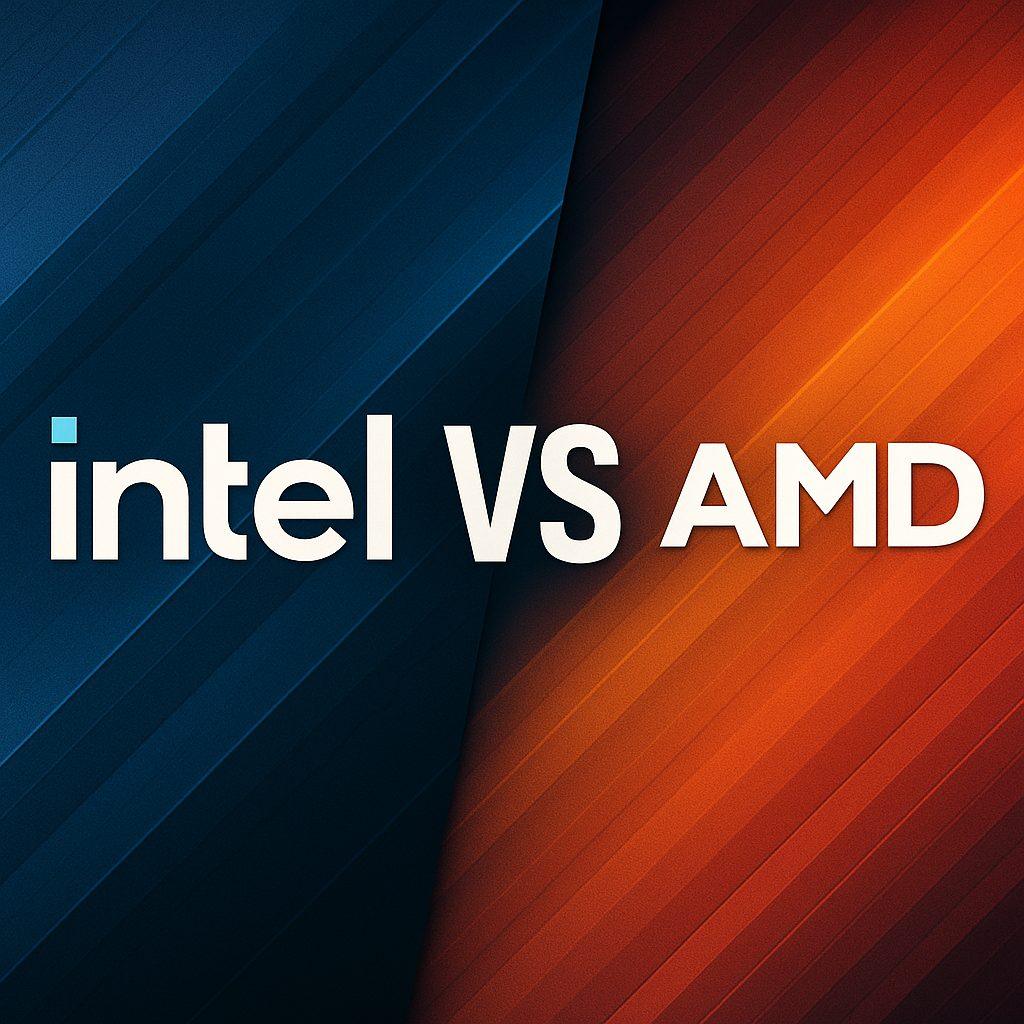Introduction
For decades, the battle between Intel and AMD has defined the CPU industry. From powering personal computers to running massive data centers, these two companies have been locked in a constant struggle for dominance. In 2026, the rivalry is as fierce as ever, with Intel’s 15th Gen Arrow Lake processors going head-to-head against AMD’s Ryzen 9000 series. The question on every tech enthusiast’s mind: who is the real boss of processors today?
📜 A Brief History of Rivalry
Intel once held an almost unshakable dominance in the CPU market. Through the 1990s and early 2000s, Intel’s Pentium and Core processors were the default choice for most PCs around the world. AMD, while competitive, was often seen as the budget-friendly alternative.
The tides began to shift in the mid-2000s when AMD’s Athlon 64 chips outperformed Intel in certain benchmarks. However, Intel struck back with its Core 2 Duo and later i7 series, reclaiming the crown. For years, AMD was relegated to the sidelines, surviving on low-cost CPUs for entry-level systems.
Everything changed in 2017 with the launch of AMD’s Ryzen processors. Built on a revolutionary new architecture, Ryzen chips delivered high core counts and competitive performance at aggressive prices. By the early 2020s, AMD had clawed back significant market share, forcing Intel to accelerate innovation.
Fast forward to 2026, and the rivalry is perfectly balanced. Intel still has brand dominance and strong OEM partnerships, while AMD has won over gamers, creators, and professionals with raw power and efficiency. The stage is set for one of the most competitive eras in CPU history.
⚔️ The 2026 CPU Landscape
Intel’s 15th Gen Arrow Lake
Intel’s Arrow Lake processors are built on an advanced 2nm process, focusing on power efficiency, AI acceleration, and high single-core performance. These CPUs are designed for hybrid workloads, with performance cores handling demanding tasks and efficiency cores optimizing battery life for laptops.
Highlights include:
- Breakthrough single-thread performance for gaming and productivity apps.
- Integrated AI accelerators that improve real-time rendering, coding assistance, and creative workflows.
- Expanded integrated graphics capable of casual gaming without a GPU.
AMD’s Ryzen 9000 Series
AMD’s Ryzen 9000 series uses TSMC’s 3nm process and takes multi-core performance to a new level. With up to 32 cores for mainstream desktops and unmatched power efficiency, AMD continues to dominate heavy workloads like video editing, simulation, and AI training.
Highlights include:
- Record-breaking multi-core performance for professionals and creators.
- Lower power consumption compared to Intel, making them ideal for energy-conscious users.
- Better price-to-performance ratio, keeping AMD attractive for budget and midrange buyers.
📊 Benchmarks in 2026
Gaming Performance
For gamers, Intel continues to hold a slight edge in single-core benchmarks, which translates to higher frame rates in esports titles and CPU-heavy games like Civilization VII. However, AMD’s Ryzen 9000 performs nearly identically in real-world gaming when paired with modern GPUs, making the difference negligible for most players.
Multi-Core Workloads
AMD shines in tasks that require heavy parallel processing. Video editors, 3D modelers, and software developers find Ryzen 9000 chips better suited for compiling code or rendering projects. Intel isn’t far behind, but AMD consistently wins in raw multi-core throughput.
AI and Emerging Workloads
Both companies have integrated AI acceleration into their 2026 lineups. Intel’s Arrow Lake CPUs include dedicated AI engines, giving them an advantage in real-time applications like AI-assisted video calls or live transcription. AMD, on the other hand, leverages its GPU division to complement CPU workloads, creating a balanced ecosystem for AI-heavy tasks.
💰 Consumer Choices in 2026
The Intel vs AMD decision often comes down to budget and intended use. Here’s how the landscape looks in 2026:
- Budget: AMD leads the charge with affordable Ryzen CPUs offering excellent value, perfect for students and casual users.
- Midrange: Both Intel and AMD are competitive, with AMD offering more cores and Intel boasting stronger gaming performance.
- Enthusiast: Intel appeals to gamers chasing maximum FPS, while AMD dominates in workstation builds with unmatched core counts.
Ultimately, consumer choice reflects personal needs — gamers may lean toward Intel, while professionals and creators may choose AMD.
🌍 Market Adoption in USA & UK
In the USA, Intel continues to dominate OEM desktops and laptops due to its deep partnerships with Dell, HP, and Lenovo. However, AMD has captured significant ground in DIY PC builds and gaming laptops.
In the UK, AMD has gained momentum thanks to value-conscious buyers. Surveys in 2026 show that 40% of DIY PC builders in the UK prefer AMD, compared to 30% in 2020. Intel still leads overall sales, but AMD’s trajectory is rising sharply.
Both companies are also expanding into the AI PC market, where demand is skyrocketing in education, research, and enterprise applications.
🚀 Future Predictions (2027–2030)
The next few years promise even more competition:
- Intel: Expected to expand its AI integration, making CPUs that act as co-pilots for everyday computing tasks.
- AMD: Likely to continue scaling core counts and leveraging GPU synergy for hybrid CPU-GPU performance.
- Mobile chips: Both companies are targeting ARM-based competition by pushing energy-efficient designs for laptops.
- Market share: Analysts predict AMD could capture 50% of the desktop market by 2030, while Intel remains strong in corporate and OEM sales.
The future may not crown a single winner but instead create a balanced ecosystem where both brands dominate different segments of the market.
✨ Final Verdict: Who Is the Real Boss?
The answer in 2026 depends on perspective:
- Intel is still the go-to choice for gamers and professionals who value single-core speed and AI features.
- AMD leads for creators, power users, and anyone seeking more cores for less money.
Instead of one boss, the CPU world in 2026 has two giants pushing each other to innovate faster, creating a win-win for consumers. Whether you choose Intel or AMD, the competition ensures you’re getting more performance and value than ever before.


